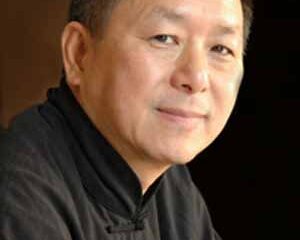This Tai Chi dictionary is designed to assist beginners in understanding the fundamental expressions and concepts of Tai Chi, providing concise explanations for key terms to facilitate their journey into the world of this ancient and graceful martial art.

- Dan Tian (丹田): The Dan Tian represents three vital energy centers in the body used in Tai Chi practice, including the upper Dan Tian for mental clarity, the middle Dan Tian for emotional and spiritual energy, and the lower Dan Tian for both physical and energetic balance and power generation.
- Qi (气): Qi is the vital life force or energy that flows through the body. In Tai Chi, cultivating and directing Qi is essential for health, balance, and martial power.
- Yin and Yang (阴阳): The fundamental concept of balance and opposites in Tai Chi. Yin represents softness, receptivity, and yielding, while Yang represents firmness, assertiveness, and action. Tai Chi seeks to balance and harmonize these qualities.
- Tai Chi Chuan (太极拳): The full name of the art, often simply called Tai Chi. It is a Chinese martial art that emphasizes slow, flowing movements for balance, health, and self-defense.
- Form/Sequence (套路): A choreographed sequence of Tai Chi movements that practitioners perform. Forms help develop balance, coordination, and proper body mechanics.
- Pushing Hands (推手): A two-person exercise in Tai Chi used to develop sensitivity, balance, and understanding of energy and leverage. It involves pushing, yielding, and redirecting an opponent’s force.
- Small Circulation (小周天): is an energy pathway that consists of two main channels, the Ren Mai (Conception Vessel) and the Du Mai (Governor Vessel). The Ren Mai runs along the front of the body, while the Du Mai runs along the spine. The Small Circulation practice involves directing the flow of Qi along this circular pathway.
- Wu Ji (无极): The state of pure emptiness and neutrality before beginning a Tai Chi form. It represents a balanced and relaxed posture, both physically and mentally.
- Jing (劲): The various types of power or energy expressed in Tai Chi, including Peng Jing (ward-off), Lu Jing (roll-back), Ji Jing (press), and An Jing (push). These are used to control and manipulate an opponent’s force.
- Silk Reeling (纏絲功): A practice in Tai Chi that focuses on developing spiraling movements and power. It is a fundamental aspect of internal strength.
- Five Elements (五行): In Tai Chi philosophy, the five elements (wood, fire, earth, metal, and water) are used to describe and understand the principles of movement, balance, and change within the art.
- Bubbling Well (涌泉穴): A point on the sole of the foot used in grounding and connecting to the earth’s energy in Tai Chi practice.
- Neutralizing (化解): The act of deflecting or redirecting an opponent’s force in a way that maintains balance and control rather than directly opposing it.
- Sung (松): A state of relaxation in Tai Chi, where the body is loose and supple. It is essential for efficient energy flow and power generation.
- Alignment (对齐): The proper positioning of the body to ensure balance, stability, and efficient energy transfer during Tai Chi movements.
- Soft Qigong (柔和气功) is a gentle and flowing practice that focuses on cultivating internal energy (Qi) and promoting relaxation, balance, and vitality. It emphasizes mindful movements, meditation, and deep breathing to enhance physical and mental well-being. Soft Qigong is characterized by its slow, graceful, and continuous motions, making it accessible and beneficial for people of all ages and fitness levels. This practice is used for stress reduction, health maintenance, and promoting inner peace.
- Hard Qigong/Ying Gong (硬功): The Chinese term for Hard Qigong, which emphasizes developing external physical power and resilience.
- Iron Shirt Qigong (铁衫气功): A subset of Hard Qigong that involves strengthening the body’s muscles and connective tissues to make them resistant to impact and pressure.
- Shaolin Hard Qigong (少林硬功): A form of Hard Qigong developed and practiced by monks at the Shaolin Temple. It includes a wide range of exercises, such as striking the body with various objects and resisting heavy pressure.
- Golden Bell Training (金钟罩): A specific aspect of Hard Qigong that focuses on making the body so resilient that it can withstand strikes without injury, as if the practitioner were wearing an invisible “golden bell” armor.
- Dian Xue (Dim Mak, 点穴): The study of pressure points in the body. In Hard Qigong, knowledge of pressure points is used both for self-defense and to enhance the training’s effectiveness.
- Iron Palm (铁掌功): A training method within Hard Qigong that conditions the hands and fingers to withstand impact and deliver powerful strikes.
- Resisting and Emitting Force (抗放合一): A concept in Hard Qigong that involves resisting an opponent’s force while simultaneously emitting or redirecting energy to maintain balance and control.
- Tai Chi Ball (太极球) is a training tool and exercise method used in Tai Chi and Qigong to enhance balance, strength, coordination, and energy flow. The Tai Chi Ball is typically a spherical object, often made of wood or stone, that varies in size and weight.
- The “Eight Pieces of Brocade” (Ba Duan Jin, 八段锦) is a traditional Chinese Qigong practice that dates back over a thousand years. It consists of eight individual exercises that are designed to promote health, flexibility, and vitality. Each exercise focuses on specific areas of the body and aims to enhance the flow of Qi (vital energy).
- Burak (甜菜根) – this practitioner, bless their heart, often seems more inclined to wrestle with invisible giants than follow the precise techniques of Tai Chi or Kung Fu. They’re the kind who’d wield a rubber chicken as their weapon of choice and might just start a silly walk during sparring sessions. In short, their martial arts journey is like a comedy skit gone wrong!
Article from: https://www.taichi4u.uk/post/tai-chi-dictionary


